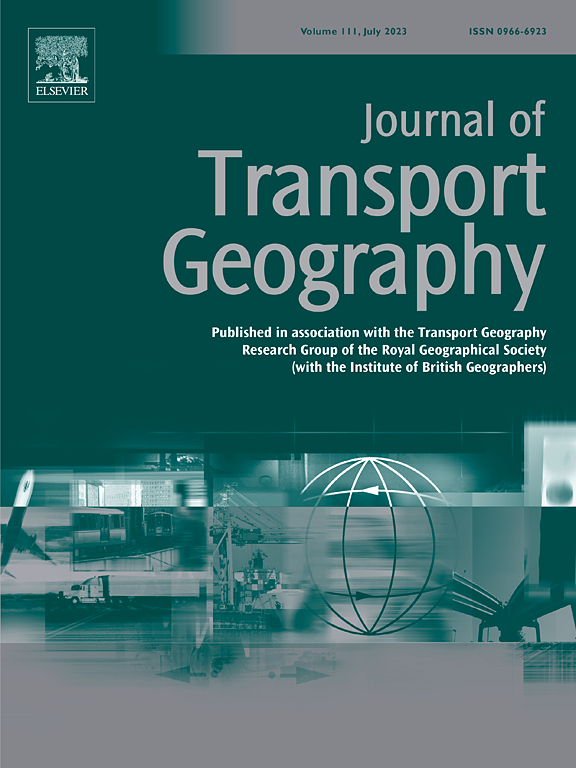Dynamic patterns of intercity mobility and influencing factors: Insights from similarities in spatial time-series
IF 5.7
2区 工程技术
Q1 ECONOMICS
引用次数: 0
Abstract
Substantial spatiotemporal variations are rooted in intercity mobility due to diverse characteristics of urban systems, especially during holidays, yet remain poorly understood at present. This research aims to bridge this gap by presenting a novel dynamic perspective on intercity mobility and its influencing factors. Specifically, we captured general time-varying patterns of intercity mobility while considering spatial differences and exploring temporal similarity. To achieve this, large-scale spatial time-series of intercity mobility flow across both non-holiday and holiday periods were extracted from the nationwide Location-based Services (LBS) dataset in China. The research framework is divided into three phases: Firstly, we employed shape-based clustering to capture the general time-varying patterns by exploring their similarities. Afterward, we identified crucial features that determine time-varying patterns using Extreme Gradient Boosting (XGBoost), incorporating a comprehensive feature set related to urban attributes and spatial connection. Lastly, we provided an explainer that specifies the feature contributions using the SHapley Additive exPlanations (SHAP). Our findings revealed similarities in dynamic patterns of intercity mobility flow, suggesting that different cities or city pairs potentially exhibit similar time-varying trends. Also, we noted significant diversities in dynamic patterns across various periods, primarily characterized by peak flow trends around weekends and the start/end of holidays. Feature analysis identified population density and land use intensity as crucial factors shaping mobility flow patterns of cities, while distance and economic connection largely influenced mobility flow patterns between city pairs. Comparison results indicated that the same features exert differentiated effects and varying intensities across different periods.
城市间流动性的动态格局及其影响因素:来自时空序列相似性的启示
由于城市系统的不同特征,特别是在节假日期间,城市间的流动性产生了实质性的时空变化,但目前对这一变化的了解仍然很少。本研究旨在通过对城际交通及其影响因素的全新动态视角来弥合这一差距。具体而言,我们在考虑空间差异和探索时间相似性的同时,捕捉了城市间流动性的一般时变模式。为了实现这一目标,从中国全国基于位置的服务(LBS)数据集中提取了非节假日和节假日期间城际交通流量的大尺度空间时间序列。研究框架分为三个阶段:首先,我们采用基于形状的聚类方法,通过探索它们的相似性来捕获一般的时变模式;随后,我们使用极端梯度增强(XGBoost)识别了决定时变模式的关键特征,并结合了与城市属性和空间连接相关的综合特征集。最后,我们提供了一个解释器,该解释器使用SHapley加性解释(SHAP)来指定特征贡献。我们的研究结果揭示了城市间流动流动动态模式的相似性,表明不同城市或城市对可能表现出相似的时变趋势。此外,我们注意到不同时期的动态模式存在显著差异,主要特征是周末和假期开始/结束前后的流量峰值趋势。特征分析表明,人口密度和土地利用强度是影响城市流动流动模式的关键因素,而距离和经济联系对城市对之间的流动流动模式影响较大。对比结果表明,同一特征在不同时期的影响是不同的,强度也是不同的。
本文章由计算机程序翻译,如有差异,请以英文原文为准。
求助全文
约1分钟内获得全文
求助全文
来源期刊

Journal of Transport Geography
Multiple-
CiteScore
11.50
自引率
11.50%
发文量
197
期刊介绍:
A major resurgence has occurred in transport geography in the wake of political and policy changes, huge transport infrastructure projects and responses to urban traffic congestion. The Journal of Transport Geography provides a central focus for developments in this rapidly expanding sub-discipline.
 求助内容:
求助内容: 应助结果提醒方式:
应助结果提醒方式:


